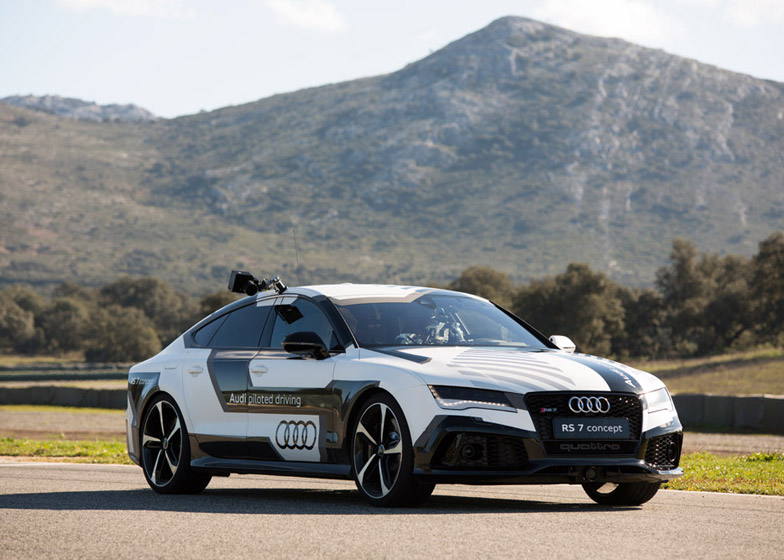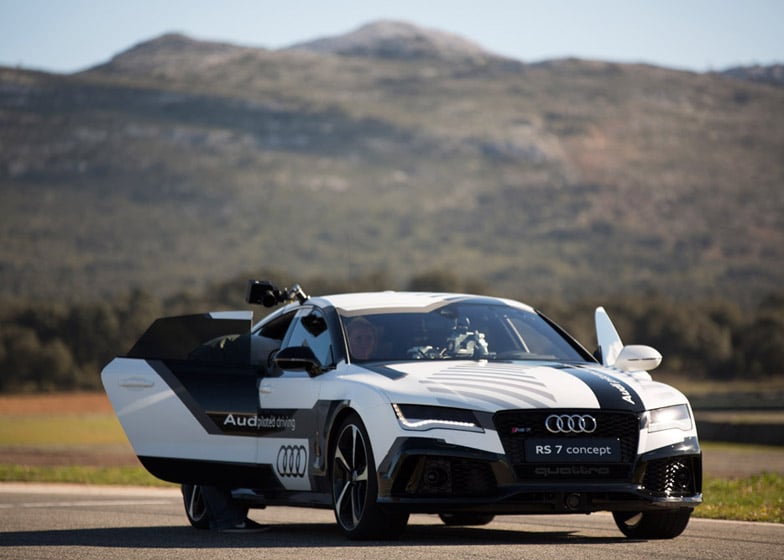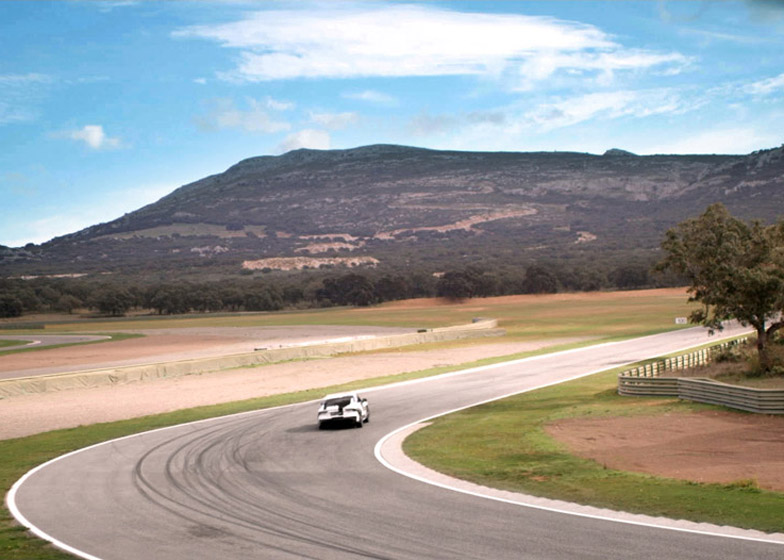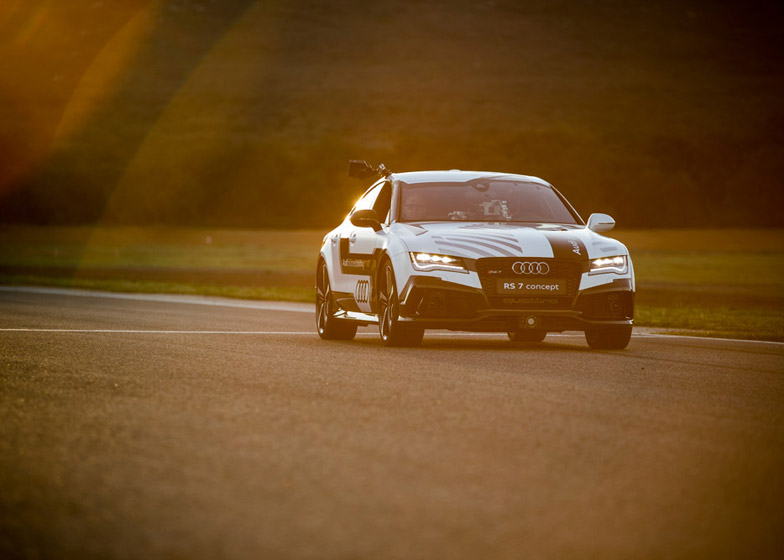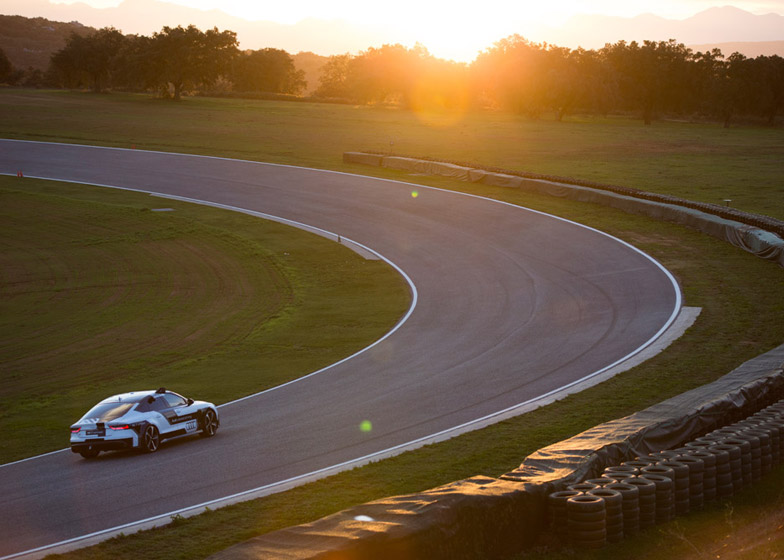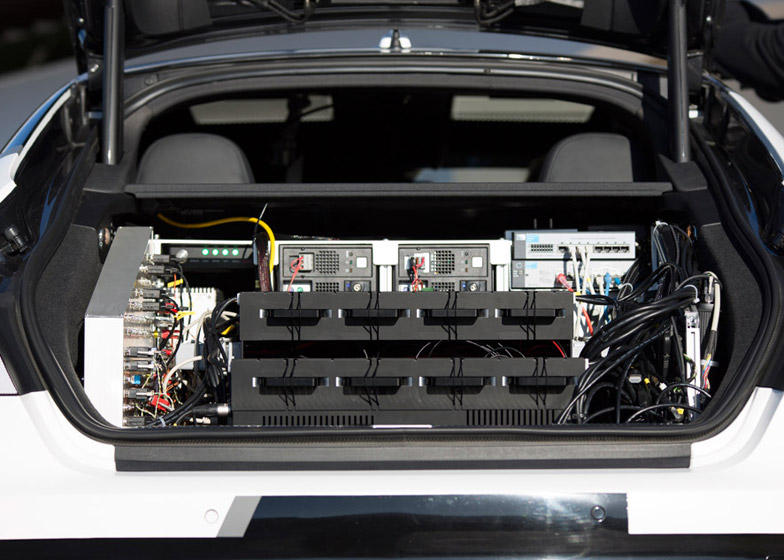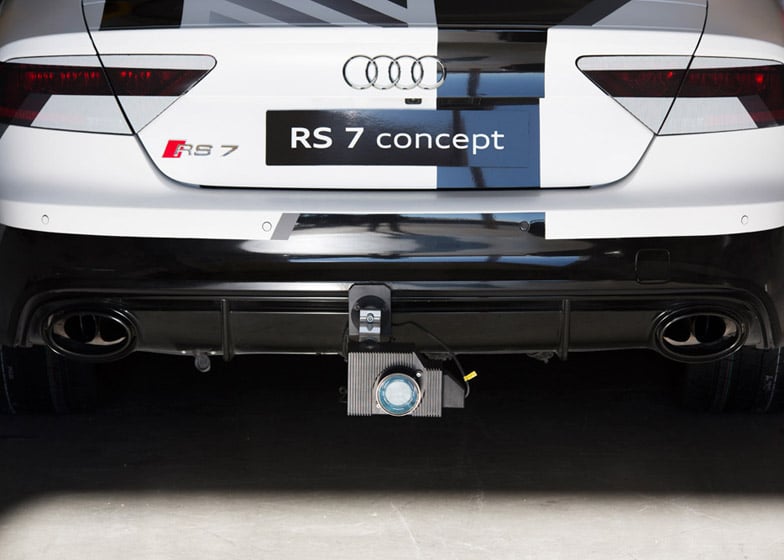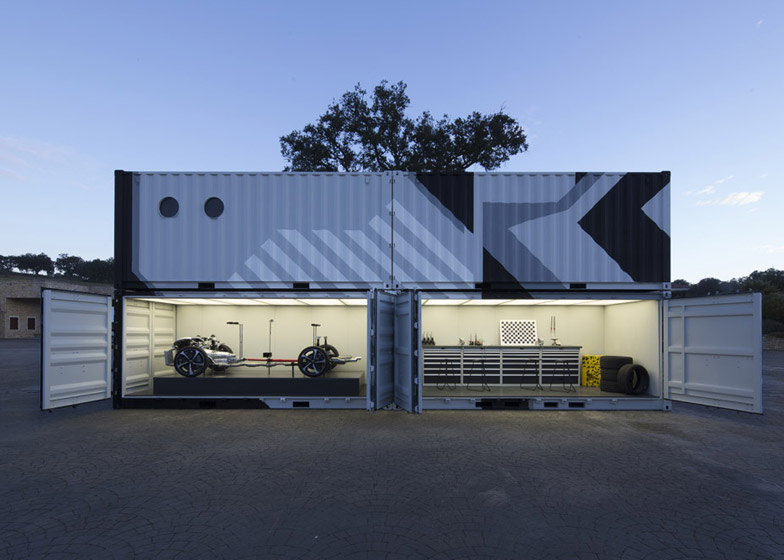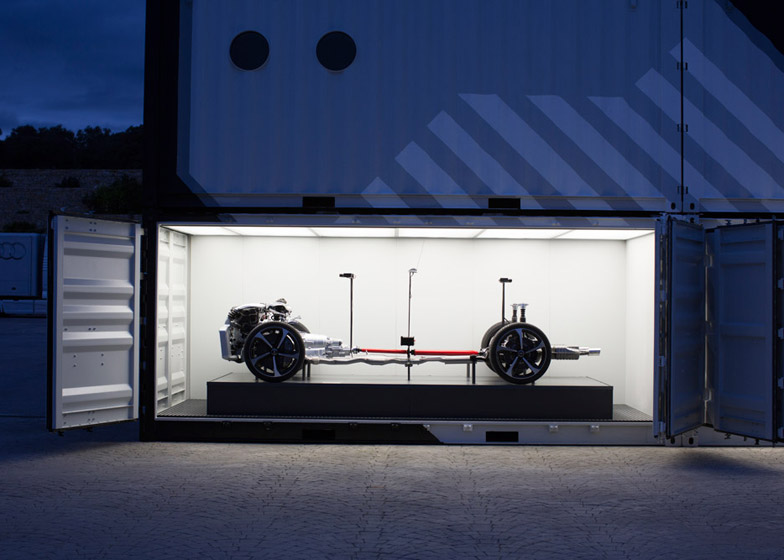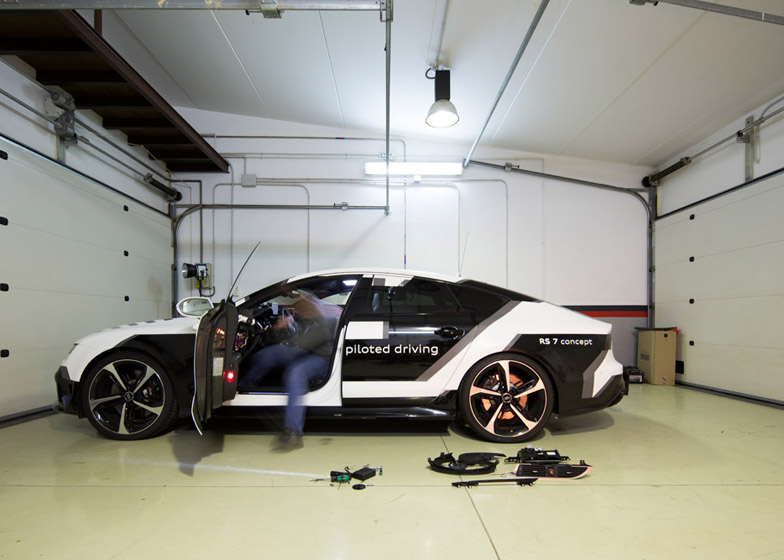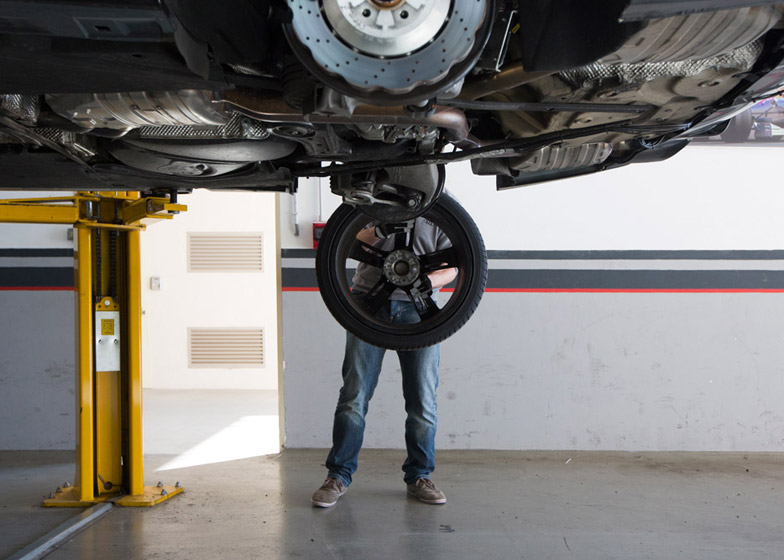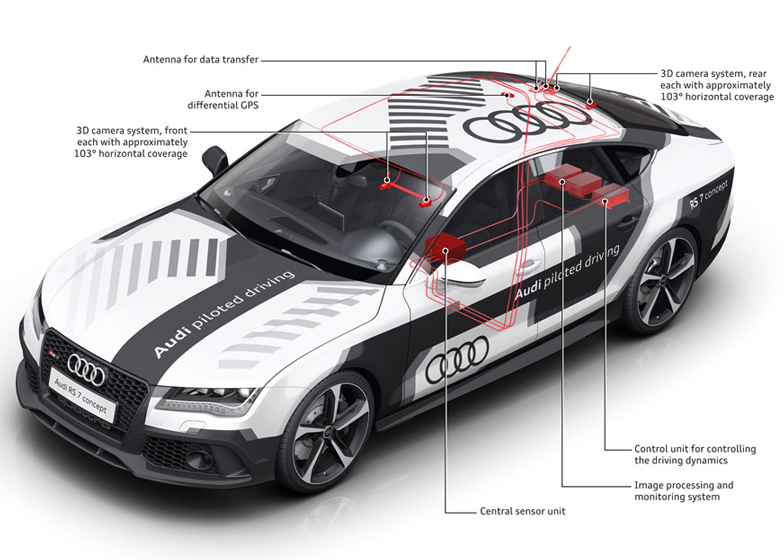Audi has teamed up with design studio Kram/Weisshaar to capture the "deathly fear" and "complete excitement" of passengers experiencing their first journey in a car that can drive itself at speeds of up to 220 kilometres per hour (+ slideshow).
Stockholm-based Reed Kram and Munich designer Clemens Weisshaar worked with Audi's technical development department to create an in-car film studio consisting of seven high-definition cameras.
These were installed on the inside and outside of one of the car brand's driverless racing cars to collect rider reactions as well as give live feedback to passengers.
"Audi asked us to work on the human element of cars that can drive themselves," explained Kram. "There are many things that are exciting around cars that can drive themselves, but the idea we found fascinating was the thrill of it."
"The future isn't only about getting from A to B," he added. "New technologies and new teams working in new ways can also strive to make things that can give us pleasure – and in addition to become more efficient."
Audi's pair of 560-horsepower RS 7 autonomous vehicles were developed in just six months. Named AJ and Bobby after racing drivers A J Foyt and Bobby Unser, the cars were tested publicly for the first time at the Grand Prix track in Hockenheim, Germany, in October. One of the cars completed a full lap at 220 kilometres per hour while completely controlled by software.
Kram/Weisshaar were given eight weeks to install their Media Capture System, before 25 passengers – including musicians, film stars, artists and Dezeen – were invited to ride in the cars for the first time at the Ascari race track in Spain.
A seven-inch OLED screen set into a panel in front of the passenger seat showed a live visualisation of the G-forces being experienced by riders, using data collected and translated via an app developed by the design studio.
Two further screens showed live broadcasts of footage being collected by cameras in and around the car. Seven cameras were housed in cases made from aluminium milled using CNC machines, and fitted with Leica lenses and highly sensitive image sensors.
At the end of the experience, passengers were presented with personal movies of their ride, highlighting their responses to sharp corners and the moment that they were able to flick a switch to activate the car's software.
Kram said the range of expressions and emotions they had captured on film spanned from "deathly fear" to "complete excitement".
"Some screaming. One person did actually try to turn [the car] off," he added. "But for the most part, once everyone steps out of the car, it's real happiness. And not because they're happy they survived! Quite the opposite! They're thrilled with the experience."
An Audi engineer accompanied each passenger on their lap, sitting in the driving seat without touching the wheel.
Kram/Weishaar's media system is only installed in AJ, and the additional weight has changed the way the car responds. Audi described AJ as having a "more aggressive" driving style when self piloting.
As part of the project, Kram/Weisshaar also designed a mobile development laboratory using shipping containers, that houses an office and workshop for the engineers working on the autonomous cars.
The cars will be tested further at a series of race courses around the world, and the lab will act as a travelling base for the engineering team led by Audi's head of driver assistance systems, Thomas Müller.
Müller explained that the cars were based on Audi's standard RS 7 model, but used a combination of location and imaging software to "learn" the the racetrack and determine the best route.
A military-grade Global Positioning System (GPS) is augmented with additional Wi-Fi location information. This is combined with photographic image location software that gathers pictures from on-board cameras and compares them to previous images taken at the same point on the track during previous circuits.
An algorithm first developed for use in an autonomous Audi in 2010, which successfully completed the Pikes Peak mountain climb course in Colorado, is also part of the system.
"You take a normal RS 7 – so you use the engine, the steering system, the breaking – then you put in a localisation system, because the car needs to know where it is, which is basically done by GPS and cameras," Thomas Müller, Audi's head of driver assistance systems, told Dezeen.
"Then we took the same algorithm that we had in the car that we drove up the Pikes Peak three years ago autonomously but at low speed. It's a kind of path planner. There are millions of possibilities to comb through and there is some intelligence behind that – assuming what is the best way to go through and at which speed."
The cars also have additional safety features, including a back-up power supply system, a secondary breaking mechanism and a radio control system that allows the engineers to manage them remotely.
Audi said that it did not intend to release fully driverless vehicles onto the market soon, but would use elements of the project to develop its standard designs for piloted driving in particular situations like parking or traffic jams.
"We're not following a strategy of having what some people call 'robotaxi'. This is not our strategic goal. We focus on building cars that look nice. We want to have cars be something very emotional," said Müller.
"On top of that then comes driver assistance systems, piloted driving – which are the functionalities where we say we want to help the driver – to avoid accidents. We want to support him in situations where he doesn't have this pleasure of driving. Like traffic jams, or parking in a parking spot in the morning. This kind of thing we are targeting."
Audi has previously collaborated with Kram/Wiesshaar on three other projects, including a an ultra-light seat made using technology from Audi's R18 Ultra racing car and a car-sharing system that debuted in Stockholm earlier this year.

